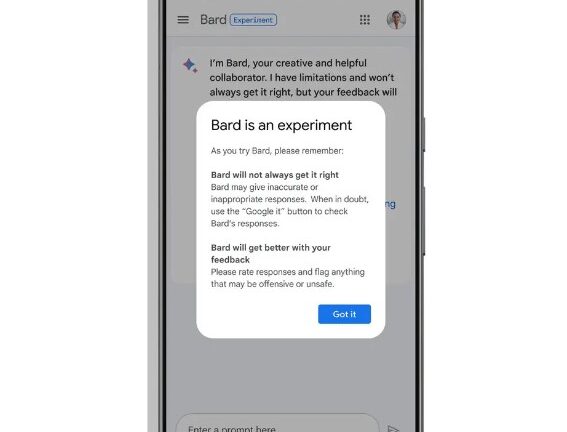
Managing Expectations and Google’s Bard
This week Google released a new A.I. chat bot called Bard. The move is part of an epic competitive battle between technology giants. There seems to be a general consensus that A.I. will be a major part of life going forward, and the big players are fighting for leadership in the space.
My friend and Kellogg colleague Jim Lecinski is using Bard and his initial assessment was positive. I’ll be looking forward to learning more about his take on it.
I was particularly struck by Google’s efforts to manage expectations; the company is wisely making a big effort to lower expectations. This is a very savvy move.
The Power of Expectations
Our expectations have a big impact on our happiness. In general, we are pleased when things are better than we expected. If we anticipate that a company will make $20 million in profit, and the firm actually makes $30 million, well, this is great performance. If we predicted a profit of $50 million, however, the $30 million seems like a huge miss.
This dynamic shows up in many parts of life. Going to the dentist? Expectations are often low. A moderately unpleasant time then seems pretty good. Flying Southwest? After the holiday fiasco, simply getting to your destination at all seems like a miracle. Go Southwest!
Managing Expectations
The process of managing expectations is important and challenging. In general, managing expectations down is always safe, because you can clear the low bar.
Mary Dillon, the new CEO at Foot Locker, is doing this. Earlier this week the firm released disappointing results and Dillon predicted weak profits for the rest of the year. She observed, “We are clear-eyed about the actions that we need to take to simplify and make our business more efficient.”
High expectations are a challenge. I have mixed feelings when my class requires lots of bid points from students. It is nice to see the demand, but with the high bids come high expectations and the risk that people will say, “Sure, that was a fine class, but it wasn’t worth all those points.”
Of course, managing expectations down can be a problem, too. If you are interviewing for a new job, you should increase expectations. If you say, “I’ll be amazed if I get 50% of the numbers right” you’ve lowered expectations but you also won’t get hired. Similarly, if you say “This new product I’m working on isn’t likely to make any money at all” then you’ll have trouble raising funds.
People who are gifted at managing expectations know there is a time to raise them and a time to lower them. It is an art.
Another dynamic is ambiguity. If an experience is non-ambiguous, managing expectations down can be a good idea. The customer will experience things in a non-ambiguous way and will notice when things are better than expected.
If an experience is ambiguous, however, this won’t happen. With ambiguous products, setting expectations high is best, because you experience what you expect. For example, if you are selling a vitamin, then you’ll want set high expectations, “This is amazing stuff!” When people take the vitamin, they will likely say, “Wow! This vitamin is doing great things.” Wrinkle creams are the same, “Think how many wrinkles I would have had!”
Google’s Savvy Move
This all brings us back to Google’s Bard. The company made one of the most deliberate efforts I’ve ever seen to lower expectations, stating right up front that the technology isn’t very good at the moment, and might produce inaccurate or offensive results.
This is a very smart approach by Google. By lowering expectations, Google is anticipating problems. If something then goes wrong, people will say, “Well, I expected that to happen.” If this goes well, people are delighted, “This is pretty good!”
When you have a respected and loved brand like Google, introducing a new technology is risky. If the new offering doesn’t work well, it could damage both the new product launch and the base business. If Bard makes mistakes, people might say “Wow, this technology is terrible. What is going wrong at Google?” Setting low expectations addresses this problem.
Now the competitive dynamics here are complicated. If there are multiple new products, all with some flaws, what is the best way to proceed with expectations? If there is no upfront investment required, lower expectations might be best – people will stick with the offering that delights. Upfront investment makes it more complex, because people get locked in, making it beneficial to sell the promise and raise expectations.
It will be interesting to see how Bard fares. I suspect that by lowering expectations, Google is ensuring that most people will say it is better than expected, and that is a key to success.
This is basically what software companies do all the time when they launch products to the general public but still label them as “beta.” It would be interesting to see if there has been any academic research that looks into how long something can be in “beta” before it actually erodes brand trust. I can recall there are several examples where some hardware or software product, selling in the millions, kept their “beta” label for years. At some point, it just gets silly.